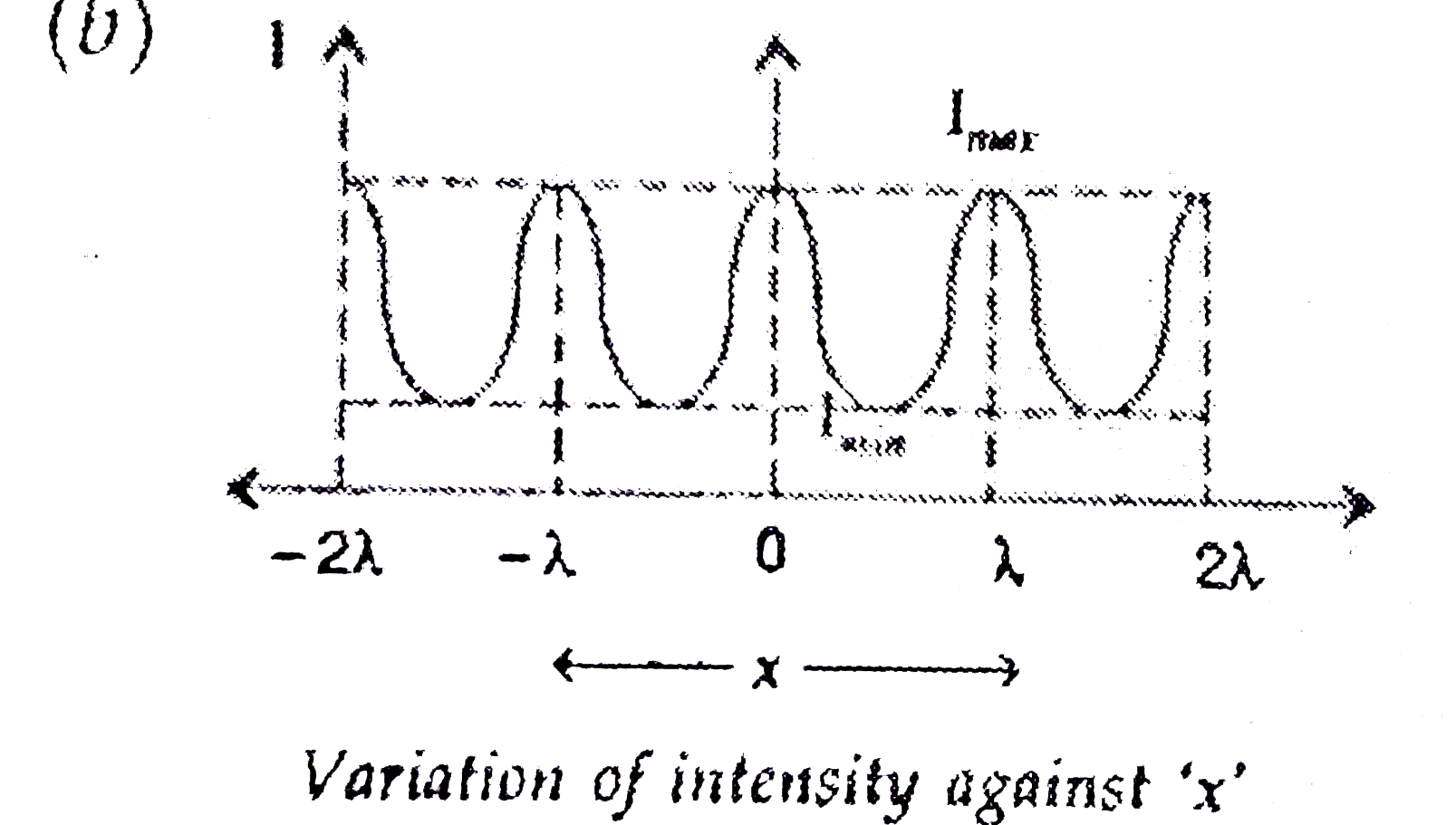(i) In Young's double slit experiment the condition for (a) constructive and (b ) destructive interference at a point on the screen . Draw a graph showing variation of intensity in the interference pattern against position 'x' on the screen .
(ii) Compare the interference pattern observed in Young's double silt experiment with single slit diffraction pattern pointing out three distinguishing features.
(b ) 
(ii) In interference all maximas are of same intensity while in diffraction central maxima has maximum intensity and then intensity falls for secondary maximas .
Also in interference all fringes are of equal width while in diffraction central fringe is twice in width
Similar Questions
In Young’s double slit experiment, deduce the condition for (a) constructive, and (b) destructive interference at a point on the screen. Draw a graph showing variation of intensity in the interference pattern against position ‘x’ on the screen.
View SolutionSketch the variation of intensity of the interference pattern in Young's double-slit experiment.
View Solution
Knowledge Check
In a Young's double slit experiment, the central point on the screen is
ABrightBDarkCFirst bright and then darkDFirst dark and then brightThe shape of the interference fringes in Young's double - slit experiment when D (distance between slit and screen) is very large as compared to fringe width is nearly
Astraight line.Bparabolic.CcircularDhyperbolicIn Young's double slit experiment, one slit is covered with red filter and another slit is covered by green filter, then interference pattern will be
AredBgreenCyellowDinvisible
Youngs Double slit experiment | variation of intensity on screen
View SolutionWrite the conditions on path difference under which (i) constructive (ii) destructive interference occur in Young's double-slit experiment.
View Solution(a) In Young's double slit experiment, derive the condition for (i) constructive interference and (ii) destructive interference at a point on the screen.
(b) A beam of light consisting of two wavelengths, 800 nm and 600 nm is used to obtain the interference frings in a Young's double slit experiment on a screen placed 1.4 m away. If the two slits are separated by 0.28 mm, calculate the least distance from the central bright maximum where the bright fringes of the two wavelengths coincide.
View SolutionAnswer the following:
(a) In Young's double slit experiment, derive the condition for (i) constructive interference and (ii) destructive interference at a point on the screen.
(b) A beam of light consisting of two wavelengths, 800 nm and 600 nm is used to obtain the interference fringes in a Young's double slit experiment on a screen placed 1.4 m away. If the two slits are separated by 0.28 mm, calculate the least distance from the central bright maximum where the bright fringes of the two wavelengths coincide.
View Solution(a) In Young's double-slit experiment, derive the condition for
(i) constructive interference and (ii) destructive interference ata point on the screen.
(b) A beam of light consisting of two wavelenths, 800 nm and 600 nm is used to obtain the interference fringes in a Young's double-slit experiment on a screen placed 1.4m away. if the two slits are separated by 0.28 mm, calculate the least distance from the central bright maximum where the bright fringes of the two wavelengths coincide.
View Solution
